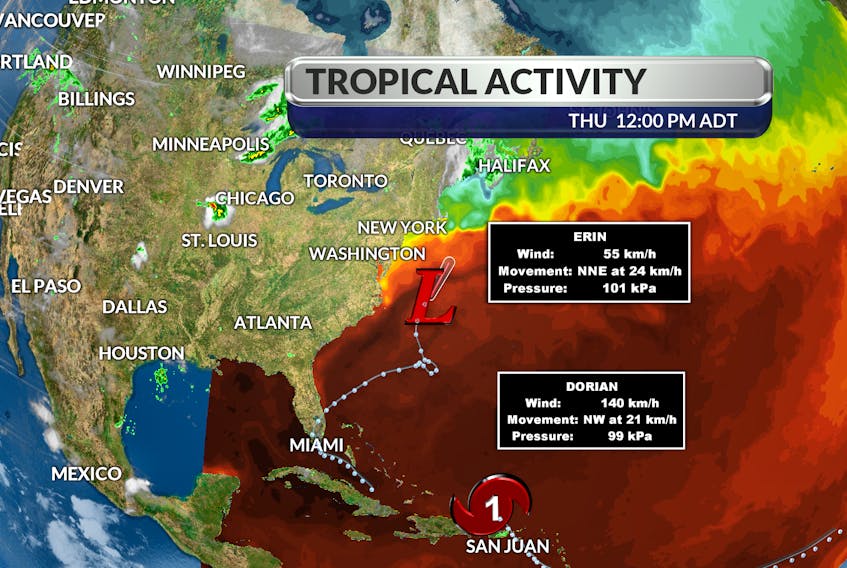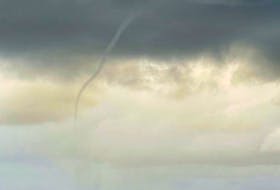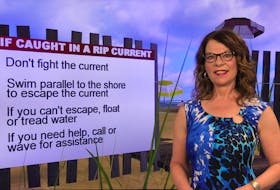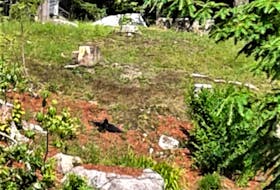Over the last few days, we watched as Erin and Dorian developed, intensified, weakened and intensified again. Through it all, we’ve heard a chorus of tropical terms: tropical storm, tropical depression, post-tropical storm, etc.
Yesterday my hairstylist, Kim White, commented that she’s been hearing the term cyclone a lot these days. She wondered why, and if it was an accurate description of the tropical weather that was heading our way.
Let’s start there.
A cyclone is defined as a large-scale, atmospheric wind-and-pressure system characterized by low pressure at its centre and by circular wind motion – counterclockwise in the Northern Hemisphere, clockwise in the Southern Hemisphere.
When a cyclone forms over the tropics, it’s a tropical cyclone.
When the maximum sustained winds in a tropical cyclone are below 63 km/h, it is a tropical depression.
When those winds range from 63 to 118 km/h, you have a tropical storm.
If those sustained winds reach 119 km/h, a hurricane is born. The Saffir-Simpson hurricane wind scale classifies hurricanes in five categories, distinguished by the intensities of their sustained winds. The highest classification in the scale, Category 5, consists of storms with sustained winds exceeding 251 km/h.
A subtropical cyclone forms outside the tropics. It’s sometimes referred to as a mid-latitude cyclone. The centre of the storm is colder than the surrounding air. A subtropical storm can generate as much wind but not usually as much rain as a tropical storm. If a subtropical storm intensifies enough to have hurricane-force winds, then it has become fully tropical and can be called a hurricane.
About 30 per cent of insurance losses around the world are related to tropical cyclones.
- Visit your weather site.
- Have a weather question, photo or drawing to share with Cindy Day? Email [email protected]
Cindy Day is the chief meteorologist for SaltWire Network.









